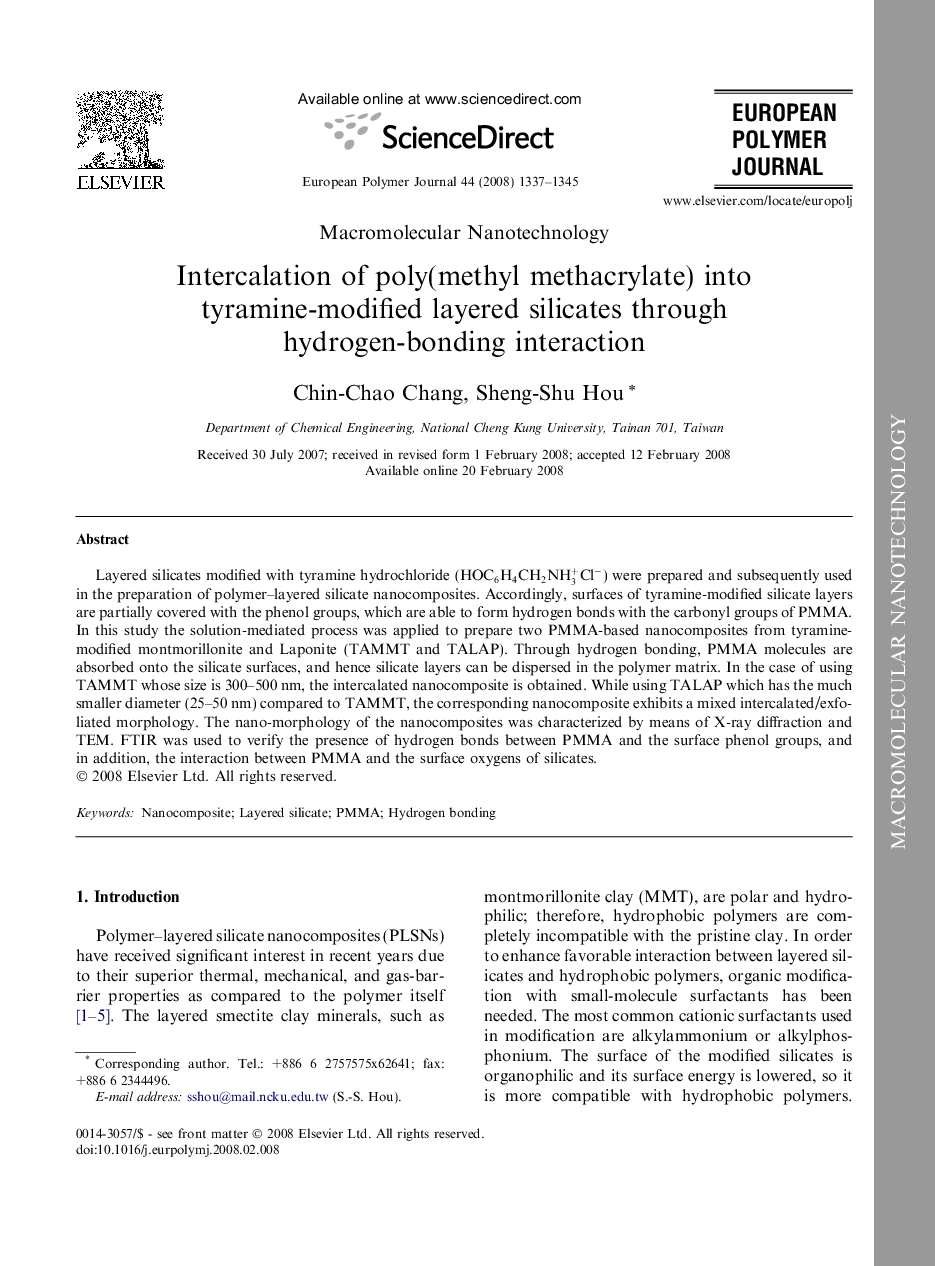| Article ID | Journal | Published Year | Pages | File Type |
|---|---|---|---|---|
| 1403110 | European Polymer Journal | 2008 | 9 Pages |
Abstract
Layered silicates modified with tyramine hydrochloride (HOC6H4CH2NH3+Cl-) were prepared and subsequently used in the preparation of polymer-layered silicate nanocomposites. Accordingly, surfaces of tyramine-modified silicate layers are partially covered with the phenol groups, which are able to form hydrogen bonds with the carbonyl groups of PMMA. In this study the solution-mediated process was applied to prepare two PMMA-based nanocomposites from tyramine-modified montmorillonite and Laponite (TAMMT and TALAP). Through hydrogen bonding, PMMA molecules are absorbed onto the silicate surfaces, and hence silicate layers can be dispersed in the polymer matrix. In the case of using TAMMT whose size is 300-500Â nm, the intercalated nanocomposite is obtained. While using TALAP which has the much smaller diameter (25-50Â nm) compared to TAMMT, the corresponding nanocomposite exhibits a mixed intercalated/exfoliated morphology. The nano-morphology of the nanocomposites was characterized by means of X-ray diffraction and TEM. FTIR was used to verify the presence of hydrogen bonds between PMMA and the surface phenol groups, and in addition, the interaction between PMMA and the surface oxygens of silicates.
Related Topics
Physical Sciences and Engineering
Chemistry
Organic Chemistry
Authors
Chin-Chao Chang, Sheng-Shu Hou,
